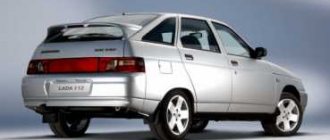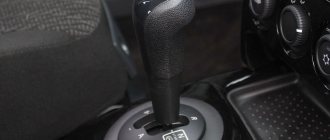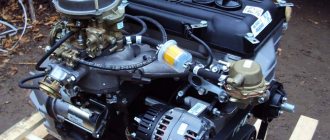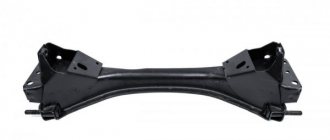Decarbonization of piston rings
If the engine starts to smoke, there is a possibility that there are rings stuck in the piston grooves. Nowadays, there are many different modern means for decarbonizing piston rings, and many drivers use them to restore engine performance. Among the most popular compositions are:
- Nitrox Power;
- LAVR ML-202;
- Titanium;
- LIQUI MOLY;
- WYNN'S.
Motorists believe that if the engine starts smoking, you need to use a decarbonizer, and the engine will work as before, without oil consumption and without smoke. Indeed, sometimes these remedies help, but only in cases where the motor has stood motionless for a long time (for example, after winter), and moisture has accumulated in it. If the car is subject to long-term preservation (put in a garage for winter storage), you should remove the spark plugs and pour oil into the cylinders, and plug the spark plug holes with plugs. With such prevention, the spark plugs will not become damp and rust will not accumulate on the sleeves.
But if, after all, a forgetful car owner has not taken preventive measures, you can use a decarbonizer. We get rid of rust in cylinders as follows:
- pull off high-voltage wires;
- unscrew all spark plugs;
- rotate the crankshaft so that all pistons are in the middle position;
- pour 45 ml of liquid into each cylinder, install spark plugs;
- leave the cylinders to “soak” for 6-7 hours;
- why do we turn out the spark plugs, turn the starter a few revolutions so that all the dirt flies out of the engine;
- We put the removed parts back in place and start the engine. At first it may smoke a lot, but then the smoke will go away.
Car owners should remember that decarbonization is not a panacea for all ills, and if the piston rings are worn out, then only replacing them will help.
As a rule, in Zhiguli cars with an age of more than 150,000, the wear on the piston group is already quite significant, and if you are also the owner of, to put it mildly, a little used “penny” that is being repaired by someone unknown and when, then in 90% of cases you will have to replace the piston with a VAZ 2101.
Piston play in the VAZ cylinder
Auto VAZ 2110, 1.6 injector, 8 valves. Mileage 140,000 km. 2006 year
Dear vazovodov! Consider this situation for me: Antifreeze has gone into the cylinder. I took it to the service. They took off the head. But that's not the point. The servicemen shook the pistons in my cylinders and with wide eyes informed me that I urgently need to overhaul the engine, because... I have a lot of wear on the pistons and rings, they say there is a lot of play (we didn’t take measurements with instruments, only with our hands). I thought about it, because... The engine doesn’t consume oil at all and just recently measured the compression. The discrepancy is not that terrible - 12.3 / 12.5 / 12 / 10. When cold - yes, the pistons rattle. But as it warms up they calm down. I heard Kalina working in exactly the same way with a mileage of 50 thousand. I heard that on the conveyor belt, ShPGs are molded from what was already there and often the piston does not quite fit the cylinder.
It seems to me that the service is trying to “love” me a little with capital. And what do you think?
Please advise what to do. Audi car 100 KR engine 5 cylinders. The pistons wobble a little in the cylinder. I removed the head from the engine and with my fingers I can loosen the pistons a little. Does this mean that the piston rings need to be replaced? Or what? I was just about to put my head back, but now I doubt it. There was an idea to put the head back and drive it like this for some more time, but I didn’t want to disassemble the engine several times. Tell me what to do.
Comments 31
The pistons should wobble slightly, but it is best to remove one and check the output. To begin with, the production of the rings (the rings have a cone shape and by what percentage of the side of the ring has become matte, you can understand what the production is. If the rings are in acceptable condition, they can also be used to check the production of the cylinder - insert the compression ring into the cylinder to a depth of 5-10 cm, it should close with a small gap (tolerances are different everywhere, but it should be somewhere in the region of 0.8-1.2 mm). If it is normal, then you need to check the wear of the piston head (well, you should already look at the documentation for a specific engine) .
If they weren't wobbly, that is. If they didn’t have a gap in the cylinders, then when heated they would get stuck in them, because metal expands when it expands.
I’ll add to the post above, if it didn’t smoke and was driving normally, then you can continue driving, the engine is not new, of course there is wear... a friend had a wall of smoke pouring out of the chimney, they took off the head, the pistons were hanging out as much as 2mm gap! My friend didn’t have much money, they only changed the rings, reassembled the engine and it stopped smoking and drove better, of course, such repairs won’t last long, but it’s been running for a year now...
Put your head in place and don't worry. If there is no smoke and the flow is normal, then everything will be fine. The piston in the bottom area is specially made of a smaller diameter. Since there it is most stressed by temperature. This is a thermal gap.
If the pistons don't move, the rings are stuck. inspect the cylinders carefully with a light! and how. this is the minimum. otherwise with such advice” you will repair this))
Well, you can and should touch the piston with your fingers if this is the case and it will move a little even with new rings! But by how much?! integrity and straightforwardness!
Damn, what kind of nonsense are you writing here? If there's no boom in the head, there's no boom in the engines, why scare people? The author, the piston in the cylinder has any stroke, this is called a thermal gap, there is no Audi engine in which the pistons do not move, if they do not move, then this is precisely the reason for analysis. If the engine was previously ok with traction and didn’t consume liters of oil, then put your head down for a drive and don’t worry. With your finger, you can only look for the G-spot in the vagina... Your engine should have “hon” on the walls, these are multiple oblique scratches on the cylinder, if they are no longer there, then in principle, “according to the book” the engine can already be overhauled... Well, we have people after the hon erased, another 300,000 are rolling in... Therefore, if the engine suits you, assemble it and don’t worry... And what is the reason for removing the head?
I removed the head because when replacing the injectors, one broke off and had to be knocked out from the inside. The engine did not burn oil, but lately there have been problems with traction.
piston markings
The bottoms of different models used on VAZ engines are shown in the figure. The pistons of the VAZ 21213 and VAZ 21230 are distinguished by their markings.
The marking is applied to the surface next to the piston pin hole.
The numbers “213” are printed on the piston of the VAZ 21213, and “23” on the VAZ 2123 model.
Models VAZ 21080, VAZ 21083, VAZ 21100 have the corresponding markings - “08”, “083”, “10”.
The piston 2108 has a diameter of 76mm, models 21083 and 2110 - 82mm.
The pistons of the VAZ 2112 and VAZ 21124 are marked accordingly - “12” and “24” and differ in the depth of recess for the valve.
Models 21126 and 11194 differ in diameter.
How to remove the cylinder head?
- First of all, it is necessary to immobilize the car. Wheel chocks are installed under the wheels, and the gearshift lever is set to the “first gear” position. Open the hood of the car and find the location of the cylinder head.
- First, all parts that interfere with free access to the head are removed. These can be: an air filter, a carburetor (or injector), “pants”, as well as various cables, pedal drives and electrical sensor wiring. The spark plugs are unscrewed from the cylinder head and, if necessary, the distributor is removed.
- Drain the engine oil and coolant. Open the timing cover and remove the belt. This is necessary in order to free the camshaft. After this, unscrew the nuts securing the cylinder head cover and remove it along with the gasket. It is recommended to install a new gasket before assembly.
- Now you can proceed directly to dismantling the cylinder head. Unscrew the special fastening bolts and remove the head along with the gasket. After this, you will have open access to the cylinder block.
Result of clearance violation
As the gap increases, and usually it is also associated with a deterioration in the performance of the rings, more and more oil begins to penetrate into the combustion chamber and is wasted.
Theoretically, this should reduce compression, but more often, on the contrary, it increases, due to the abundance of oil on the compression rings, sealing their gaps. But this doesn’t last long, the rings coke, lie down, and compression disappears completely.
Pistons with increased clearances will no longer be able to work normally and begin to knock. The piston knock is clearly audible on the shift, that is, in the upper position, when the lower head of the connecting rod changes the direction of its movement and the piston passes the dead center.
The skirt moves away from one wall of the cylinder and, choosing a gap, hits the opposite wall with force. You can’t drive with such a ringing noise; the piston may collapse, which will lead to a disaster for the entire engine.
How to remove the cylinder head?
- First of all, it is necessary to immobilize the car. Wheel chocks are installed under the wheels, and the gearshift lever is set to the “first gear” position. Open the hood of the car and find the location of the cylinder head.
- First, all parts that interfere with free access to the head are removed. These can be: an air filter, a carburetor (or injector), “pants”, as well as various cables, pedal drives and electrical sensor wiring. The spark plugs are unscrewed from the cylinder head and, if necessary, the distributor is removed.
- Drain the engine oil and coolant. Open the timing cover and remove the belt. This is necessary in order to free the camshaft. After this, unscrew the nuts securing the cylinder head cover and remove it along with the gasket. It is recommended to install a new gasket before assembly.
- Now you can proceed directly to dismantling the cylinder head. Unscrew the special fastening bolts and remove the head along with the gasket. After this, you will have open access to the cylinder block.
How to measure piston ring clearance
At the first stage, you just need to visually inspect the part. It should not have cracks or any other defects. If you notice even minor mechanical damage, the element must be replaced with a new one.
Some preventive procedures will also help
The piston head must be cleaned of carbon deposits, and special attention must be paid to the grooves that are located under the rings. Only after these procedures can you begin to inspect the gap. Since there are only three rings in the device
Each has its own parameters:
Since there are only three rings in the device. Each has its own parameters:
- Upper compression 1-0.04-0.075 mm.
- Lower compression 2-0.03-0.065 mm.
- Oil scraper 3-0.02-0.055 mm.
Be extremely careful when taking measurements. Each ring has its own optimal gap size. For greater accuracy, use a micrometer. This is a device that allows you to measure all the parameters you need with extreme accuracy. For this purpose, there are special probes that allow you to easily and quickly take readings from the grooves.










